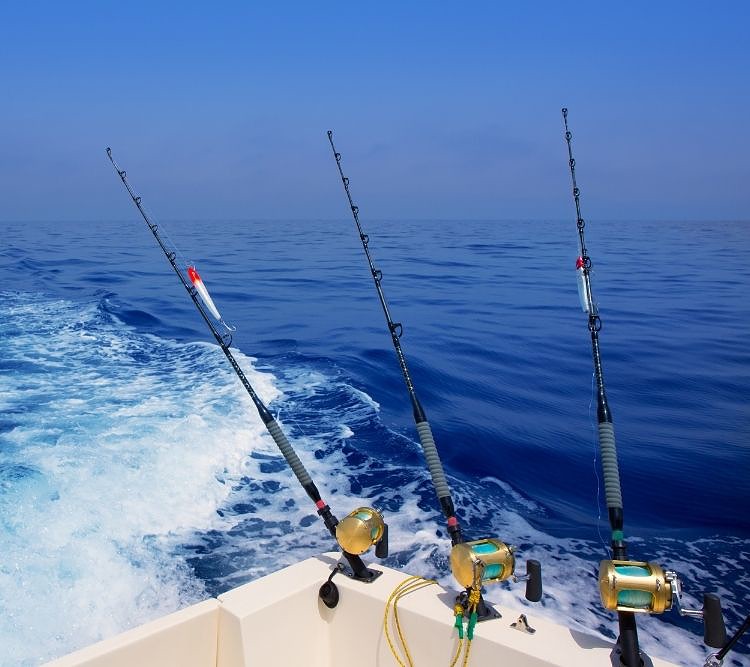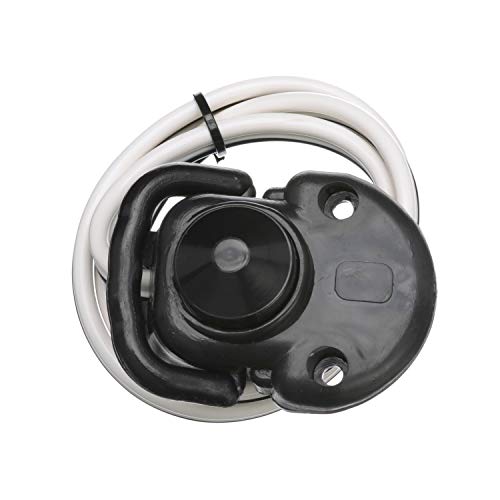Have you heard about trolling motors recently and you’re wondering what the fuss is all about? Or maybe you’ve used one and you’d like to know more about them.
Either way, learning about trolling motors is interesting and exciting. Here’s what you need to know to get the right motor for you or to satisfy your desire to know more about these fishing tools.
Table of Contents
What is Trolling?
Trolling doesn’t just mean making people mad on the internet for personal fun and profit anymore!
When it comes to fishing, trolling means moving your lure through the water of your favorite river, lake, or ocean at a constant speed. This is in contrast to constantly casting it and retrieving it again until you catch a fish.

While you can use an outboard motor to troll, those motors tend to be loud. They might scare away your fish. They can also be too fast for effective trolling.
A trolling motor is a small, electric motor that moves your boat quietly, slowly, and steadily through the water. You can cast bait that creates action through movement, then move your boat through the water at a speed that maximizes that action.

The trolling motor allows you to cover more ground until you find a productive fishing spot. Then, some trolling motors can lock onto that spot and keep you there until you have fished it out.
Other Uses for a Trolling Motor

Trolling motors have a couple of other uses, as well.
First of all, you can use them to fight the wind and current, all while keeping your boat over the right fishing spot. There’s not much more frustrating to an angler to find the perfect fishing place, only to be blown away from it and struggle to find it again.
Even though trolling motors are small, they should be able to keep you steadily in one place. Simply adjust your direction and thrust as the weather changes to stay in one place.
You can also use a trolling motor to cover a large area that you know the fish love. Instead of staying in one place, you can use your trolling motor to slowly move you and your lure over a larger area.
This allows you to cover more ground and gives you a better chance of catching fish when they are spaced farther apart. Don’t limit yourself only to the fish in one small area!
Who Uses Trolling Motors?

Many anglers choose trolling motors. They are used on everything from fishing kayaks to large, commercial fishing boats. Anyone who wants to move slowly over the water or hover over a productive fishing spot can benefit from a trolling motor.
Of course, trolling motors are different on different-sized boats. On larger boats, trolling motors may look massive when compared to the simple ones used on fishing kayaks. The key is to get the right trolling motor for your boat and your needs.
The Benefits of a Trolling Motor

There are many benefits to having a trolling motor. These include:
- They are quieter than outboard motors or other motors, so they won’t scare your fish away.
- They are designed to move your boat slowly, at a speed that will maximize the effectiveness of your action-based lures.
- They allow for the precise movement of a boat through the water. If you need to hold to a precise drift pattern, for instance, a trolling motor will allow you to do that.
- Some trolling motors offer special features, like GPS, autopilot, and more, which allow you to focus on fishing because you don’t have to worry about what your boat is doing.
Types of Trolling Motors
There are several types of trolling motors. The one that is best for you will be determined by the type of boat you have, the type of fishing you do, and your own personal preferences.
The top manufacturers of trolling motors, like Minn Kota and MotorGuide, all have trolling motors in each of these categories. You’ll need to choose one that is the best size for your needs, then make sure it gets installed properly so it will work well for you.
1. Bow Mounted Trolling Motors
Bow mounted trolling motors sit on the bow, or front, of your boat. You can set them up to either push or pull the boat through the water, depending on the purpose of your trolling motor and how you plan to use it.
Bow mounted trolling motors are usually used less for trolling and more for maneuvering carefully around good fishing spots. Having your thrust on the bow makes it easier to keep the boat pointed toward the wind or the current so you can cast where you need to.
Bow mounted trolling motors are most commonly used on bay boats or bass boats, though some other anglers prefer them, too. You can steer them via tiller or digitally, both of which are discussed below.
Use your bow-mounted trolling motor to move slowly along a shoreline you are casting to, move between fishing hotspots, or control boat drift. Remember, trolling motors are designed for slow movement so you may also want an outboard motor to cover longer distances.
2. Transom Mounted Trolling Motors
Transom mounted trolling motors are mounted on the transom, or the back part of your boat. Some may be screwed directly into the transom, but most are held on with a series of powerful clamps that keep the motor in place.
Transom mounted trolling motors are ideal for actual trolling. If you want to give your action-based lure the best possible presentation by moving it through the water very slowly, your transom-mounted trolling motor will do exactly that.
Trolling motors mounted on the transom are different from those mounted on the bow in several ways. First of all, they are more likely to have tiller steering, rather than foot pedals or digital controls.
They are also easier to push off course than bow-mounted versions. Because the pivot point for thrust is in the back of the boat, the motor has less control over the entire boat and how it moves. You may need to readjust your course more often with these than with bow-mounted motors.
You see transom-mounted trolling motors on a wide variety of boats, including dinghies, jon boats, and other lightweight boats. In some of these cases, the trolling motor may be the only source of power that the boat has.
3. Tiller Steer Trolling Motors
A tiller is a long arm that extends from the trolling motor. You can hold this and move it to manually direct the course of the boat through the water.
You can also use the tiller to speed the boat up or to slow it down. Move it clockwise to increase your speed and counterclockwise to reduce it.
On trolling motors with a variety of speed settings, you may feel a click through the tiller each time it changes settings. If you want to go into reverse, just push the tiller handle counterclockwise past where it started.
Controlling a boat with the tiller can take some getting used to. When you move the tiller to the left, the boat will go right. When you move it to the right, the boat will go left.
You will also want to make sure you know how to take the boat out of the water. Most tiller systems have a button you push to release the motor so you can tilt it up.
4. Foot Control Trolling Motors
Some trolling motors come with foot pedals to control the motor. Others offer them as aftermarket add-ons. Either way, they can make for a hands-free fishing experience.
Last update on 2024-07-26 at 17:27 / Affiliate links / Images from Amazon Product Advertising API
Different foot pedals work differently, depending on who made them. Some of them have left and right sides that you press on to control which direction the boat goes, with a harder press giving more power.
Others have separate foot-operated speed controls, apart from their left-and-right directional controls. Even others use backward and forward pressure to go left and right.
Make sure you know how to use your foot controls and that you get practice with them before you end up in any sort of dicey situation.
5. Digital Control Trolling Motors
Some newer trolling motors offer high-tech answers to controls. You may have a remote control that you can wear around your neck or even a control app that you can download to your smartphone.
Some even provide you with a digital display that connects via Bluetooth to the motor itself!
These controls are usually advanced and offer you the ultimate trolling motor experience. These models also tend to come with many of the latest features like GPS auto-lock, autopilot, or the ability to follow a predetermined course or even a coastline.
If you get one of these models, you’ll want to experiment with the controls so you can get the most out of your trolling motor every time you take it out on the water!
Conclusion
There is no single trolling motor that is best for all anglers. Instead, you get to choose the options that will work best for you. Take into account your boat, how you plan to use the trolling motor, and how much experience you have before you decide which one to buy.
Once you do get a trolling motor, take the time to mount it well and get to know it. Spend time practicing with it and give yourself plenty of test runs to get used to using it.
When you feel confident using your trolling motor, take yourself out for a real fishing trip! Use your trolling motor to catch more fish than ever before and, most of all, have a great time!

I created this site to help people – to help you – with your boat problems. Instead of helping one person at a time, I want this website to be the “one-stop-shop” for everyone’s boating concerns. Read more.








